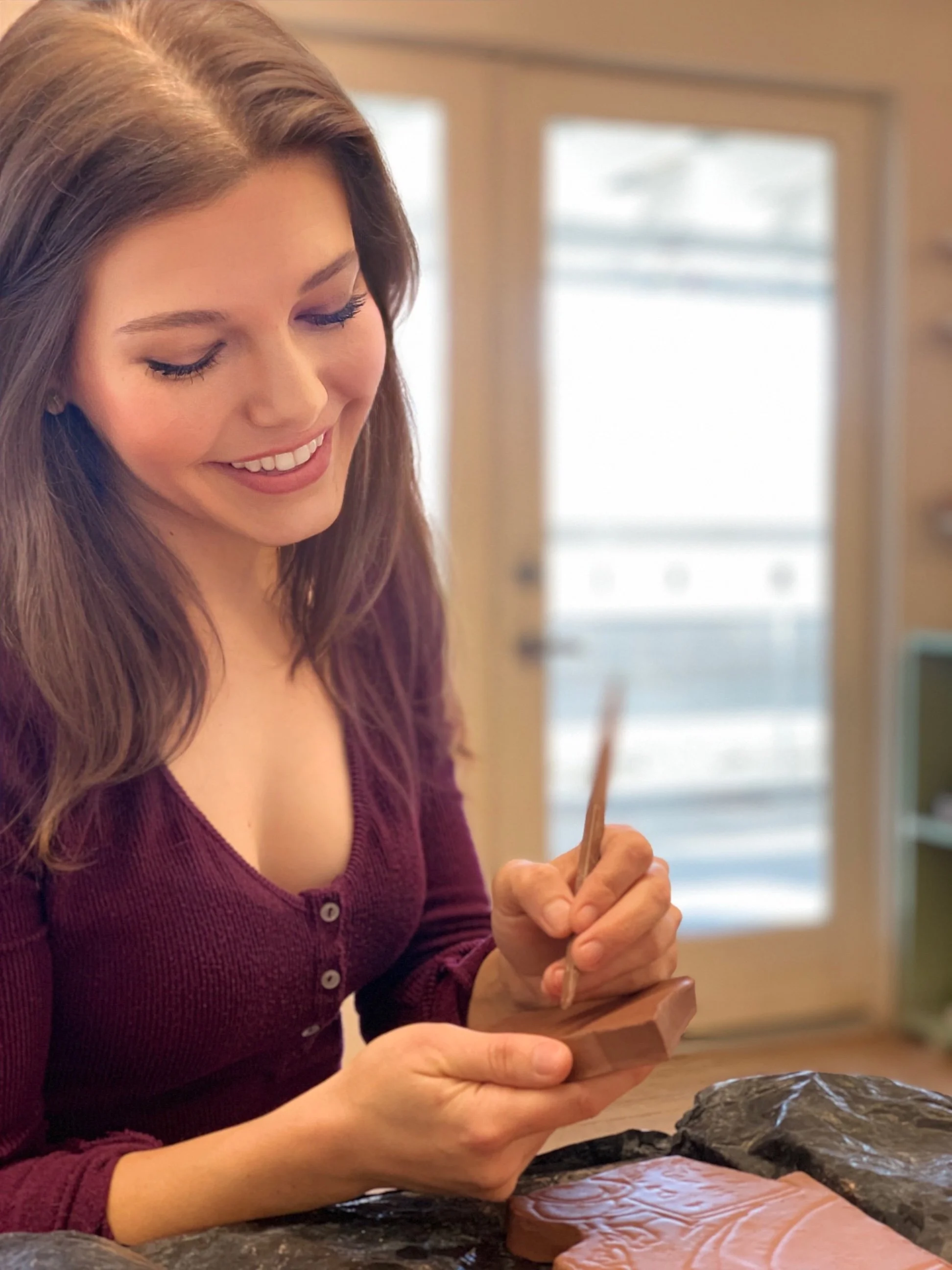Interview with artist Courtney Wilson
Courtney Wilson is an Arkansas artist whose imaginative ceramics celebrate the history and personalities of Arkansas and especially the people of her hometown, Pine Bluff. She is a recent graduate of Applied Design with emphasis in Ceramics from the University of Arkansas Little Rock and is currently in a residency at Penland School of Craft. More of Courtney’s work can be found at her website.
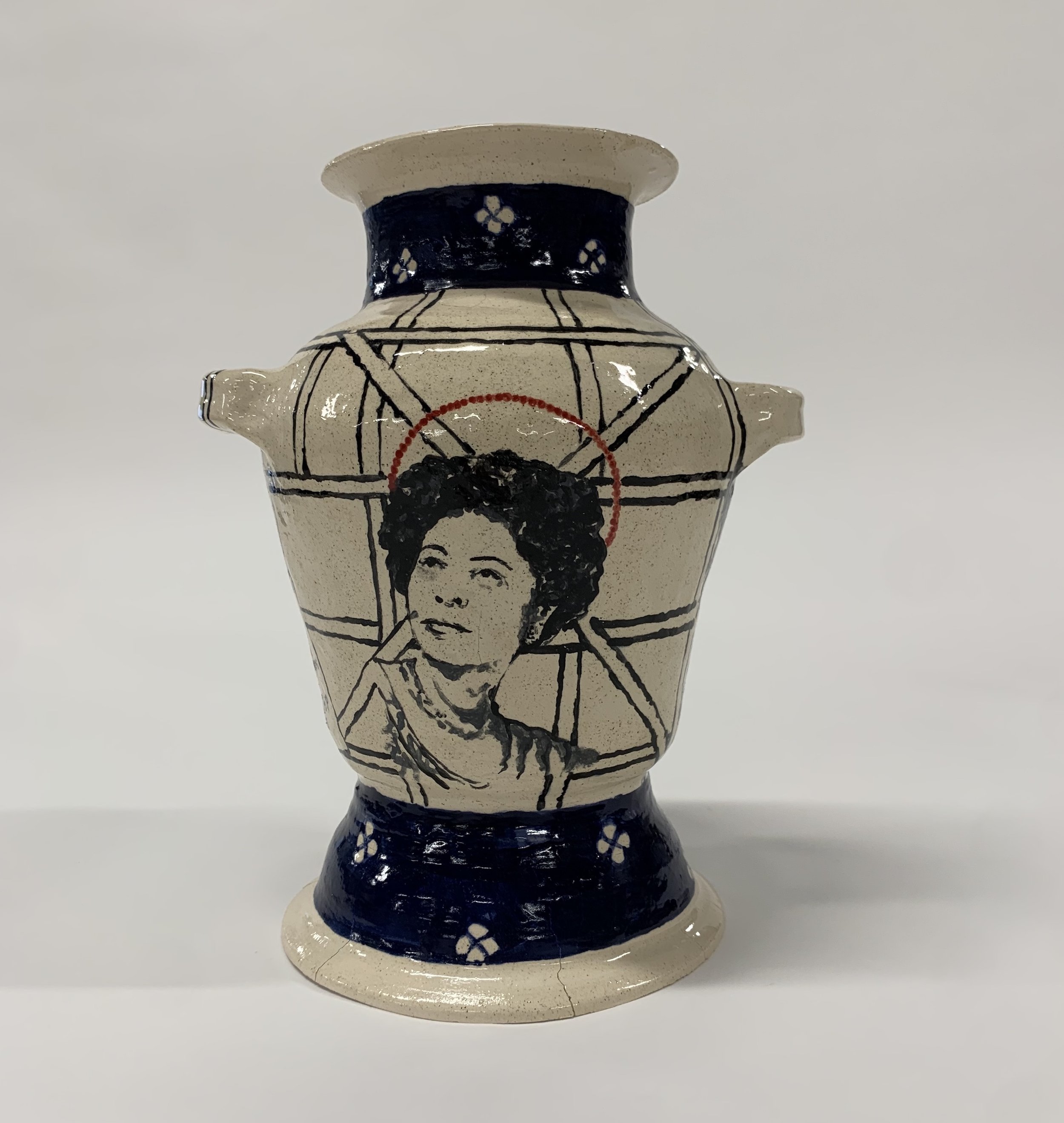
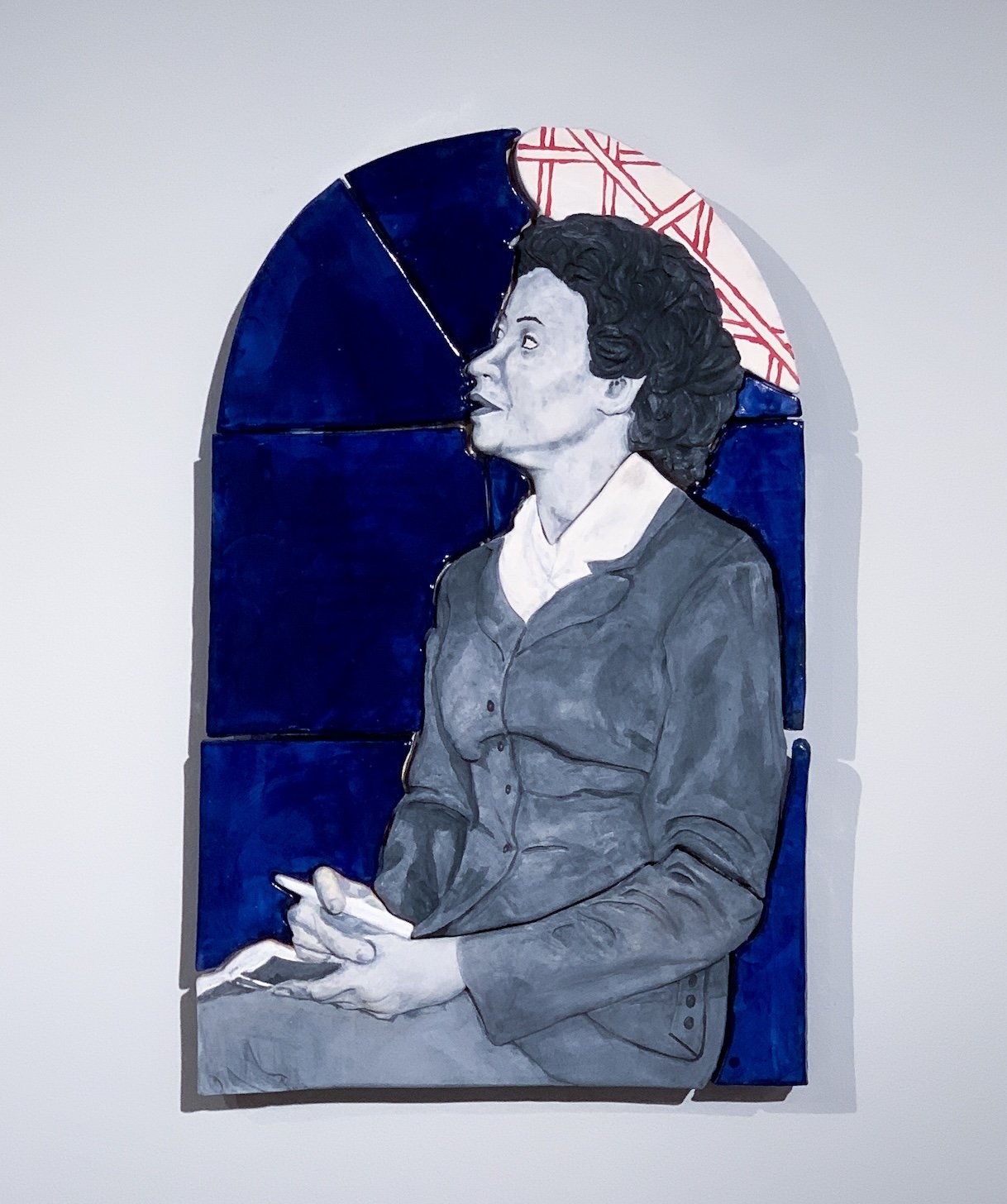
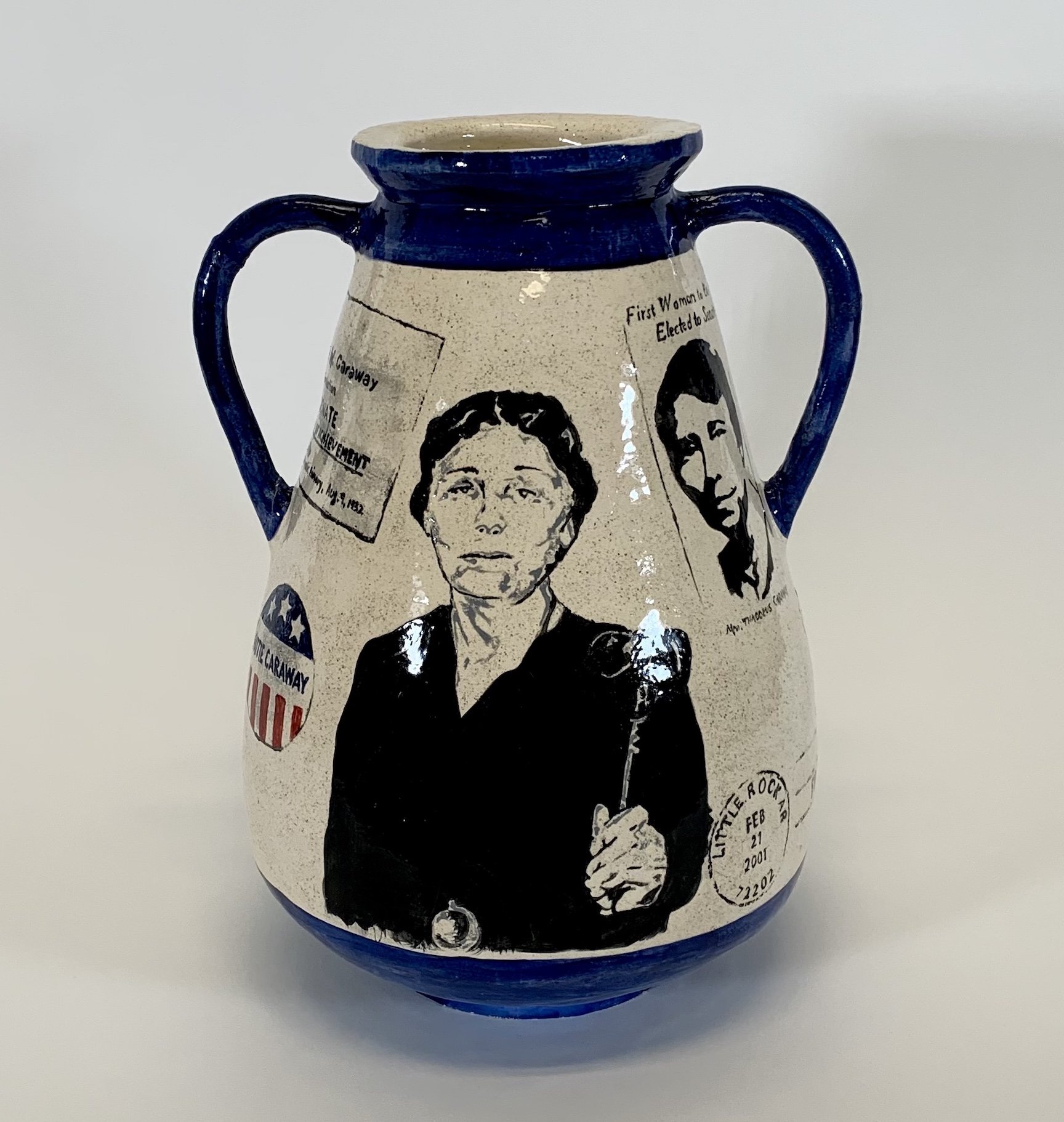

AAS: Courtney, were you born and raised in Arkansas?
CW: Yes, I was born and raised in Pine Bluff, Arkansas. I graduated from Watson Chapel High School and attended Arkansas State University in Jonesboro for my undergraduate degree in Business Management and then an MBA. I worked in the corporate world for quite a while before making a serious shift to be in art and enrolling full-time at UA Little Rock as an art student. In the Spring of 2024, I graduated with my BFA in Applied Design with an emphasis in Ceramics.
AAS: So, after your MBA, you worked for a significant amount time before going back to school to study art. That could not have been an easy decision. What made you decide to do that?
CW: It was definitely not an easy decision. I had a series of pretty life changing events that led up to that moment. It was sometime after my father’s passing in 2018, that I really started to make more room in my life for art. I was having a tough time, and my mom suggested taking an art class together. We enrolled at the Arkansas Museum of Fine Arts for a ceramics hand-building class with Jacqueline Currie. It was something completely new for the both of us, and we completely fell in love with the magic of ceramics.
I also began taking studio art classes part time at UA Little Rock at night after work, and in 2021 I decided to enroll full time. The pandemic was happening, I had been let go from my brokerage job, and I was ready for an industry shift in my career. I wanted to be in the arts in whatever capacity I could—even if that didn’t necessarily mean I would make it as a full-time studio artist.
I’ve wanted to be an artist from the time I realized that was real career path. Throughout my childhood and early adult life, I had art simmering on the back burner. Our schools did not have the best funding for the arts, but the teachers did a lot with what they had available. I asked for drawing sessions with my cousin, copied illustrations from school library books, volunteered to help in any art project I could, and I later worked for a painter in Jonesboro, Paula Wewers, for a short time in exchange for oil painting lessons.
AAS: Much of your work features historical Arkansas personalities. Why?
CW: The catalyst of this body of work really started from a road sign. There is a section of highway that connects downtown Pine Bluff to the interstate. It is called the Martha Mitchell Expressway. This very non-personal, large, green highway sign was my only real knowledge of this so-called “Martha”. It wasn’t until much later in my life that I found out about her story. She had passed over a decade before I was born, and people had really stopped sharing her story. I was shocked that she was the whistleblower that broke Watergate, and I continued to be mesmerized by her incredible personality. Why didn’t I hear more about her in school? I was from the same hometown as Martha, as artist Jeff Donaldson, as political activist Bobby Hutton, and the conversations about these local heroes and their power are important to our contemporary history.
AAS: The first one I want to ask about is Reverend Al Green. It is a ceramic vessel with remarkable decorations and a graphic of Al Green. Tell me about it and how it was made.
Reverend Al Green, 19” x 8” x 7”, stoneware
CW: It is hard to imagine my childhood without Al Green’s music playing on the family stereo and at get-togethers. It was a real joy to make this vessel. All the images are referenced from snapshots of his life. I am combining imagery and motifs I gather in my research, to create real historical context around the person I’m presenting. The painted images on all my vessels begin as a unique decal. I do this by making individual hand-painted underglaze transfers. I then apply these decals to the ceramic—in either a green, or bisque state, on stoneware clay. Once applied, I then hand paint additional motifs. Like on this amphora, I painted a silk shirt pattern from his clothing as the repeating pattern for the vessel’s neck. I then applied a clear glaze, and it is fired for the last time.
“The research I get to perform around the subjects of my vessels is honestly as exciting as the thrill I get from making them.”
AAS: I am fascinated by Dreamland, a vessel commemorating Dreamland Ballroom, which was in Little Rock ‘back in the day’. Where did you find those graphics?
Dreamland, 15” x 8.5” x 8.5”, stoneware
CW: The research I get to perform around the subjects of my vessels is honestly as exciting as the thrill I get from making them. Many of the images come from readings, documentaries and historical archives. The Central Arkansas Library System also has a wealth of information that I frequent in my research. For Dreamland, I started with the PBS documentary, Dreamland: Little Rock’s West 9th Street, and that quickly led to trying to find documents from performers appearing at Dreamland during that time. All of the flyers were found in historical archives and translated into a visual running line of events from one spectacular location.
“I often laugh to myself and think how amazing it would be, if thousands of years from now, my pots where archeologically dug from the earth and studied in the same way we study ancient Greek pottery today. How would the future see our Hometown Heroes?”
AAS: Your vessels are reminiscent of Greek vessels, which often told stories. I love that you reference that art form in your work.
CW: The Greek vessels have become a grounding and connection point to have my father physically present in my daily craft. He was always proud of his big, large and beautiful Greek family. He was also an avid storyteller. Utilizing the forms and compositions of ancient Greek pottery is a pathway for me to not only explore my Greek heritage, but it is a way to be a storyteller as an artist. These vessels have historically been used to share the stories and histories of gods and heroes—epic tales and narratives. I want to share our local heroes on the same plane.
I often laugh to myself and think how amazing it would be, if thousands of years from now, my pots where archeologically dug from the earth and studied in the same way we study ancient Greek pottery today. How would the future see our Hometown Heroes?
AAS: Sister Rosetta Tharpe is a remarkable piece, and it too celebrates Arkansas musicians. Do you listen much to gospel and jazz music from the 40’s?
CW: I listen to blues and gospel quite a bit. I remember the first time I listened to Rosetta's music. I watched her performance set online. It was the 1964 Manchester set at an unused road station. It was completely amazing to watch, if you haven’t seen it—I highly recommend it. Needless to say, it was pretty earthmoving to find out she was also from Arkansas. I really enjoy listening to Nat King Cole and Ella Fitzgerald in my down time. There is a lot of joy in getting to experience artists that are new to me in this practice of making as well. The Roberta Martin Singers are a gospel group that I have been listening to since starting this project. There is a lot of great music that has been made from people that have touched this state.
Sister Rosetta Tharpe, 15.75” x 11” x 11”, stoneware
Sister Rosetta Tharpe, 15.75” x 11” x 11”, stoneware
AAS: I now want to revisit Martha Mitchell. One of your most humorous works is of her and you also created a wonderful ceramic plaque. These are really documentaries of her and of her time. It’s interesting, and maybe sad, to think that there is a generation of kids who have no idea what she is holding or what is depicted on the vessel.
Martha Mitchell, 17” x 17” x 3.5”, earthenware
CW: Haha, I guess I’m a part of that generation to be honest! It was only through my own curiosity that I really got to know about Martha and her story. I was so excited to find a photo of her holding a larger-than-life phone that was taken as a joke. It is really iconic of her and of her personality. It ended up being the chosen portrait for the “A-side” of the hydria of Martha Mitchell. She was known to be quite the gossip of her time, and that becomes a complicated personality trait when you are married to John Mitchell, the United States Attorney General. Her conversations connected to a political turning point. I really tried to lean into this notion through the illustrations of the phone cord connecting these moments of praise and turmoil. I enjoyed that portrait of her so much, it also became the jumping point of my relief sculptures. I started a series modeled after the Italian Renaissance Luca della Robbia workshop’s ceramic sculptures. They were often in high relief and made to elevate biblical figures. Their use of tile work to construct these works often made their sculptures mimic stained glass windows. These religious elements places more focus on my attempt to elevate each subject and translates those attempts in an exciting three-dimensional way.
Martha Mitchell, 13.5” x 13.5” x 13”, stoneware
Martha Mitchell, 13.5” x 13.5” x 13”, stoneware
AAS: You also studied sculpture, and Papa is a terrific ceramic bust. Tell me about it and that technique.
Papa, 14” x 17” x 9.5”, earthenware
CW: I really appreciate that! Yes, took quite a few sculpture classes while at UALR, so many, that I asked to be a studio assistant for the sculpture program. I sculpted Papa in 2021 for my Intro to Sculpture class with Michael Warrick. This was my first attempt at any kind of a portrait in clay, and I really clicked with the process. It was like figure drawing, but in 3D. The portrait was built on a steel rod armature in ceramic terra cotta clay. I chose to make the portrait of my grandfather, and I photographed him from multiple viewpoints for my reference images. Then added clay, a lot of clay. Once the portrait was completed but before the clay began to dry, the portrait was cut apart, taken off the armature and hollowed out to consistent depth throughout. It was then reassembled and fired.
Father Fred, 15” x 9.5” x 9.5”, earthenware
AAS: I believe you also studied with Kevin Kresse?
CW: In the summer of 2023, I had the incredible luck and honor to do an Internship with Kevin Kresse. During this time, he helped with achieving more accurate representations in figure sculpture, and gave honest advice, and needed guidance on what it takes to be a full-time studio artist. We sculpted the same model side-by-side, teaching me his processes and methodologies around approaching and creating a sculpture project. My final result was Father Fred, a life-size portrait in terra cotta clay, cold-finished with paint and wax.
AAS: I know that you’re busy right now in your winter residency at Penland School of Craft so thank you for taking time for this interview. How are things going there?
CW: I am actually here with my mentor, Michael Warrick. I have been working as his assistant for the past two years, helping with projects, archiving his entire portfolio of work, and managing his website and social media accounts. Shameless shout out for his website, which I’ve been working on with him a lot over the past two years!
We both applied for Winter Residency here at Penland, and we were both accepted for the same session. It’s been a real life-changing experience to share creative space with so many high-caliber artists and see their unique processes, especially with the same medium across 16 different types of craft studios.
I am currently working on an extension of my relief work. I am trying to explore more as far as subject matter, scale and, honestly, trying to find more playfulness in my ceramic work. I brought with me two previously unfinished pieces with me to Penland and have finished and assembled them in my first week here. I had started relief sculptures of Lil’ Bobby Hutton, who I mentioned earlier, and Maya Angelou this past fall at my two-week Residency at Touchstone Center for Crafts in Pennsylvania. Being here at Penland was a great continuation of that time to expand on my relief series, and I have the creative freedom to take different approaches to finishes on these sculptures.
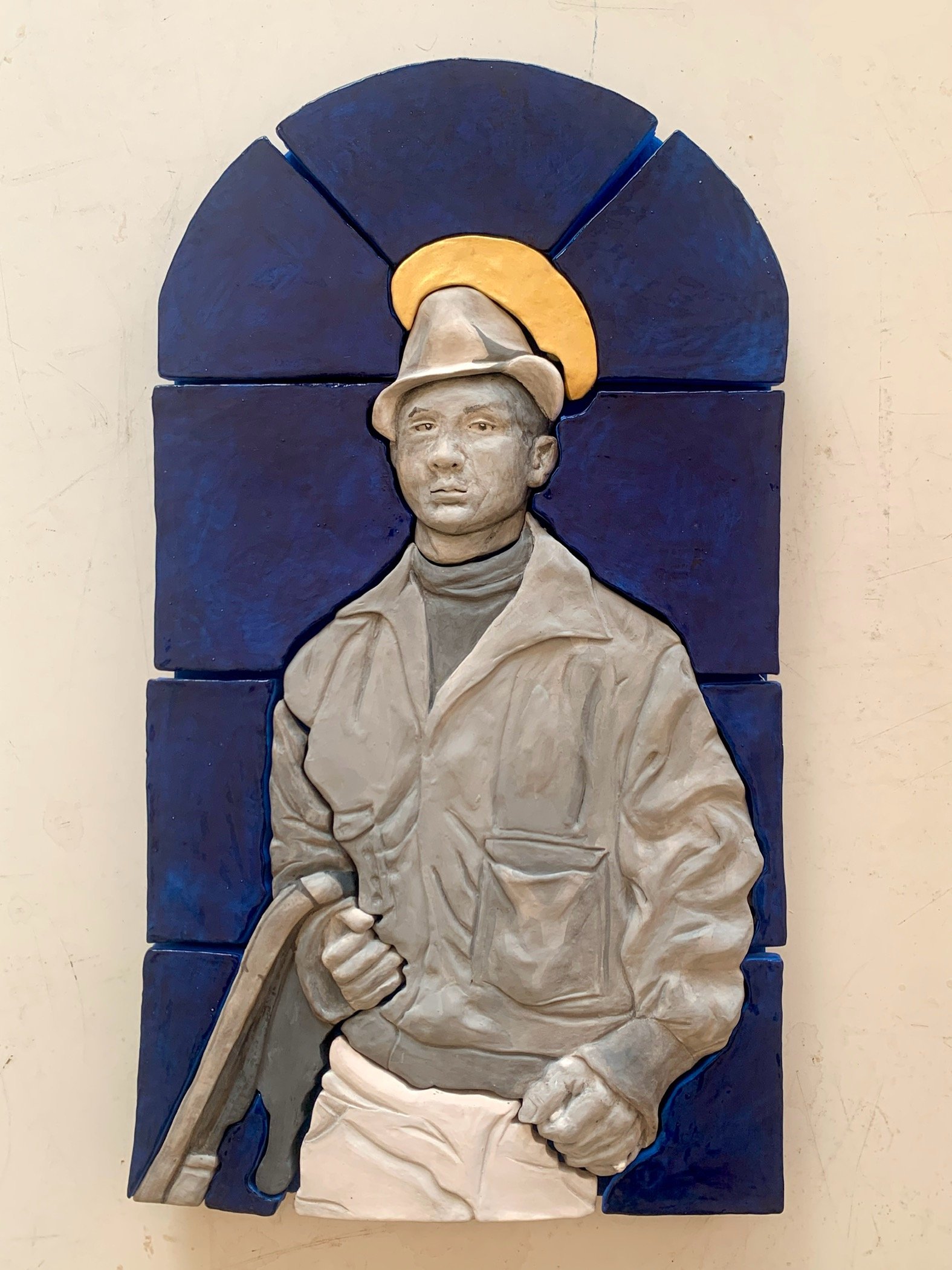
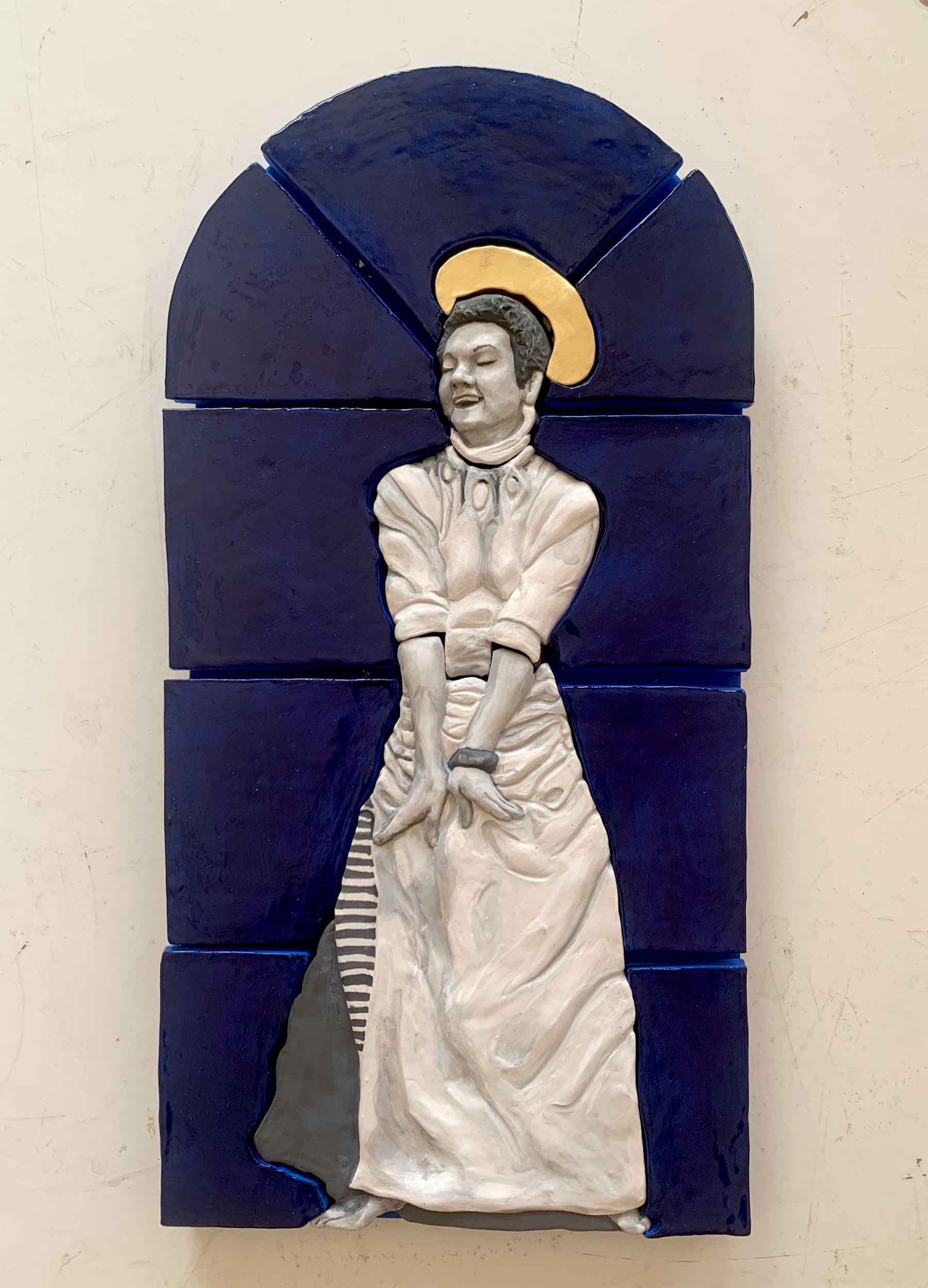
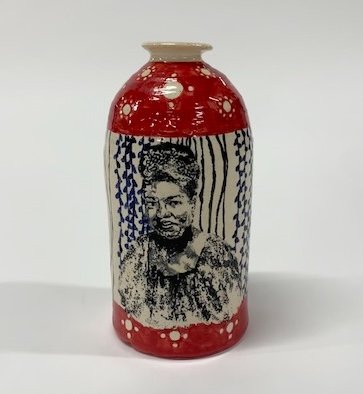
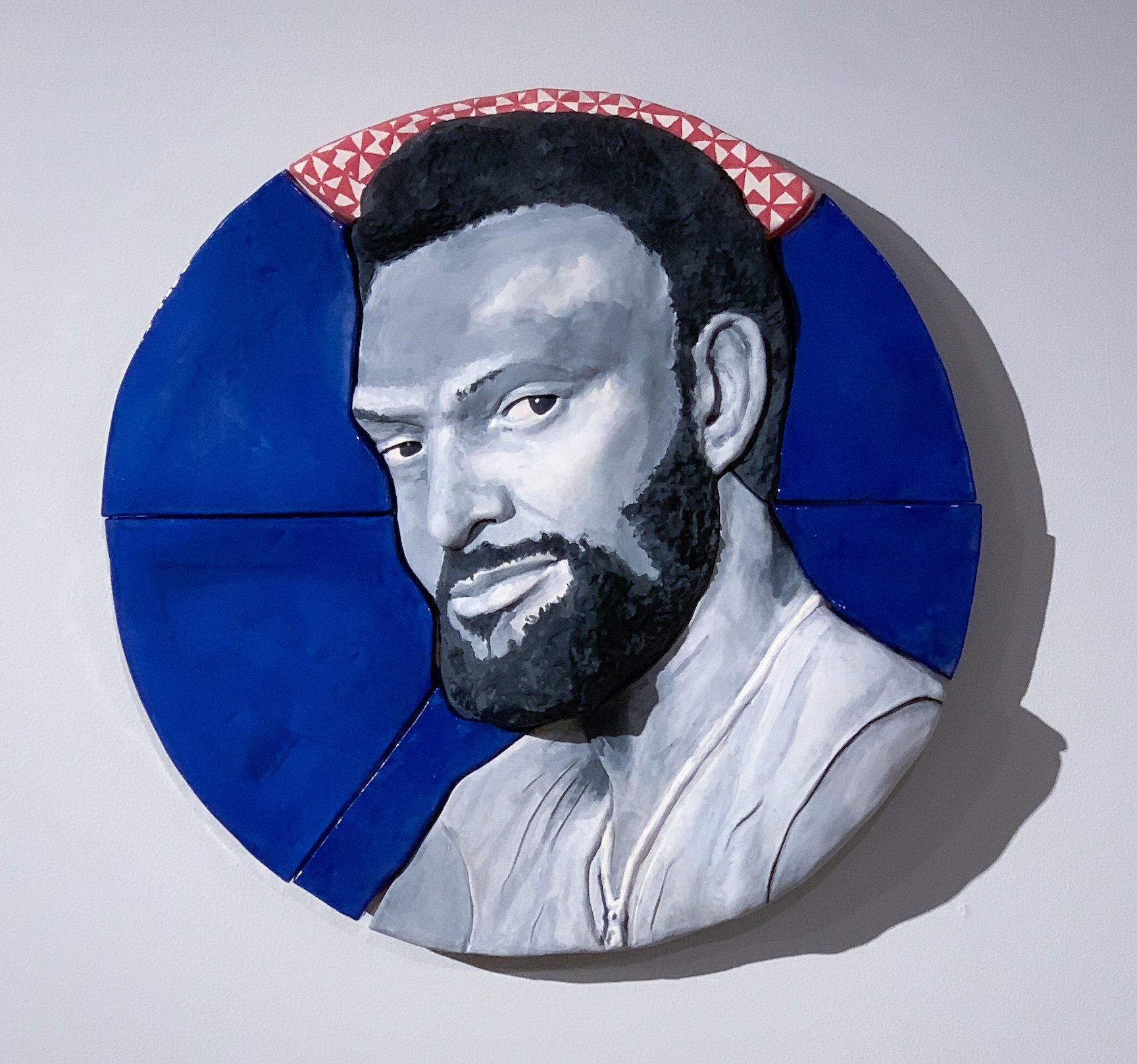
AAS: Courtney, what can we expect next from you?
CW: I have a busy year ahead! This past year, I was a recipient of the Windgate artLaunch Grant. This grant allows me to work in conjunction with a mentor, and I have been fortunate enough to have Tip Toland as my artLaunch Mentor throughout this time. I have been working to expand in terms of scale in my figurative work, and she has been a dream to learn from! I am making a series of sculptures for a presentation of our work at the conclusion of the grant period at the Windgate School of Art and Design this spring. I am planning to continue this series for two-person show focusing on portrait sculpture, alongside Michael Warrick at Ouachita Baptist, and a solo show at ASU Beebe later this year.
I’m also looking forward to teaching a short workshop series with my friend and fellow artist, Kim Arcega, at Crystal Bridges for Women’s History Month. This will be an interesting intersection of materials combining ceramics and textiles to make a communal quilt.
I am really looking forward to the year ahead, I know I would not be equipped and as ready for it, if not for my incredibly supportive family, amazing friends, and grace of the gods of ceramics and mentorship. It truly takes a village.
